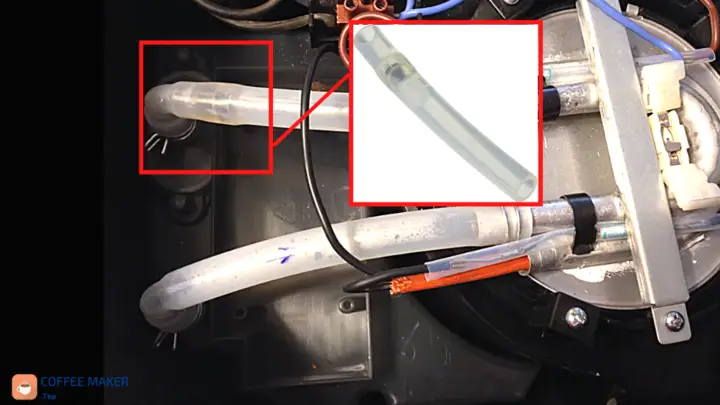Delonghi manufactures coffee machines to suit Nespresso and Dolce Gusto capsule systems but also offers a range of super-automatic espresso and drip coffee machines. This guide will address common problems with your drip (or combi) coffee machine.
Please note that we will only focus on problems related to the drip coffee maker side for combi coffee makers, as the espresso functionality has already been covered in previous guides (refer to here).
No coffee comes out of the drip coffee maker
Fortunately, Delonghi drip coffee makers have a relatively simple internal structure comprising a few well-distributed components. While it is uncommon for the drip carafe heater to malfunction, it can still happen.
The design of this coffee maker ensures that internal components are protected from excessive temperature or current. Delonghi incorporates thermal fuses that automatically cut off the circuit in case of failure, safeguarding both the coffee maker and the user.
Issue: The drip carafe’s thermal base fails to heat, there is no audible sound, and no coffee is dispensed from the top.
Possible causes: One of the two thermal fuses has blown, or the thermostat is damaged.
Solution: To resolve this issue, follow these steps:
- Ensure the coffee maker is turned off and disconnected from the power source.
- Disassemble the coffee maker to access the thermal fuses and the thermostat.
- Using a multimeter, check the continuity of these components. If any of the components do not show continuity, it indicates a malfunction, and they should be replaced.
Remember to exercise caution while performing these steps to avoid any potential hazards.

Very little coffee comes out of the drip coffee maker
A common problem with coffee makers is the accumulation of limescale within the machine. Typically, limescale deposits form along the pipe walls, causing valves and other components to become clogged. This obstruction hinders the proper water flow, resulting in limited coffee output.
Problem: When attempting to brew coffee using the drip zone of our coffee maker, we observe that only a small amount of coffee is dispensed, despite the base heating up.
Cause: The thermoblock dedicated to the drip coffee preparation incorporates a plastic pipe with an internal valve. If limescale from the water builds up and blocks this valve, it restricts the water flow to the top of the drip zone. The functioning base heating indicates that the thermoblock is operating correctly.
Solution: To address this issue, follow these steps:
- Turn off and disconnect the coffee maker from the power source.
- Disassemble the coffee maker to gain access to the affected pipe.
- Disassemble the pipe and thoroughly clean it using white vinegar. Ensure all limescale deposits are removed. If cleaning is not feasible, consider purchasing a replacement pipe.
It is essential to exercise caution during the disassembly and cleaning process. Additionally, white vinegar helps dissolve limescale and restore proper water flow, improving the coffee maker’s performance.

We can hear the water boiling, but no coffee comes out of the drip coffee maker
The fact that the water boiling sound is audible indicates that the thermoblock is operational. Moreover, the coffee maker successfully draws water from the tank and heats it, eliminating the possibility of water supply to the thermoblock as a potential problem.
Problem: Although the water boils inside the coffee maker, it fails to reach the decanter.
Cause: This situation can arise due to two distinct possibilities. Firstly, when placed in the machine, the valve responsible for pressing the coffee decanter may not be functioning correctly. Alternatively, there could be a disconnection in the internal piping that runs from the thermoblock outlet to the top of the coffee maker.
Solution: Depending on the specific cause, follow these steps to resolve the issue:
- In the case of the valve, Ensure the coffee decanter is correctly positioned and press the valve firmly. If the decanter is properly in place, thoroughly examine and investigate the valve to identify malfunctions.
- In the case of disconnected piping: Carefully disassemble the coffee maker to gain access to the internal components. Specifically, focus on inspecting the piping connected to the thermoblock outlet. Look for any signs of disconnection or loose connections that could impede water flow. Reconnect any detached pipes securely.
Remember to exercise caution during the disassembly process and carefully handle the components.
